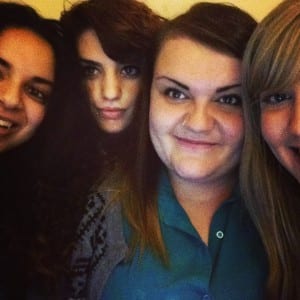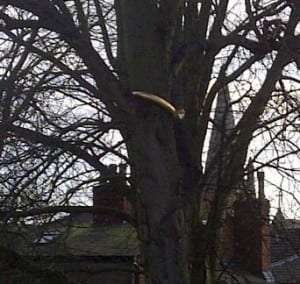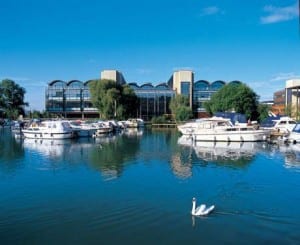Our aim for this week was to :
Come up with scenarios for each space, any revelations? What excites us about the space?
This week was an eye opener for us as a group. We explored the possibilities of things to do in each space (some of our ideas can be seen on Daniella’s Blog page).
Whilst looking in to each space, the entire group decided that we were more drawn to the side spaces in the contempary gallery and the symmetrical space found in the museum part of the collection. After much deliberation, we decided that instead of using all five spaces, as originally planned, we would focus on the two spaces that stood out to us the most.
Finally, with our space decided on it was time to incorporate what our period of experimenting had taught us.
From here, we began to use the materials that we had bought to the lesson.
– Marbles
– Army Figures
– Cardboard cups
– Coloured ducks
– Bubbles
From the outset, we were aware that we wanted our performance to have a sensory aspect to it. As the space that we were looking in to was located in the contemporary art section of the Collection, we felt that there had to be something that was aesthetically pleasing to the audience, as the room itself is. The marbles were used to make noise, the cardboard cups were used to simulate touch and finally, the bubbles and the coloured rubber ducks were to incorporate something that we felt would engage the audience and create a spectacle for them.
We began this process in the Gallery area one:

‘When looking in the main gallery we found inspiration in the Roman centurions reconstruction. What interested us about these figures was that they were small individual objects and collectively they formed an army. From stacking of the cups, we then had the idea of merging the two together and creating a war/ battle field scene.’ – Daniella
From this, we decided to add to the display that we found in the museum, as seen below.


We then used this idea in the space, incorporating the cardboard cups and the army figures in order to make a spectacle for the audience. It was important to us to show the link between what was being acted out and the space in which the audience found themselves.


During this process, an installation of a television screen repeating words over a video was playing. As a group, we decided that we thought it was quite effective to have words being spoken over us as we were building. It almost helped us to be engrossed in what we were doing. Because of this, I decided to write a poem.
When the experimental poem was written, we decided to build the war-like scene again with Tequila reading the words over us. When this was done, we discussed how it had made us feel:
Alicia: How did it make you feel?
Daniela: I felt like i had to achieve something, my mind was totally set on building it up.
Tequila: Did me speaking over your actions make a difference?
Ellie: Yes i felt it created a tense atmosphere.
Alicia: Was it therapeutic for you?
D&E: Yes, we were completely involved in the construction, totally unaware of our surroundings.
Tequila: Did you envisage a story?
Daniela: Yes i felt protective over my men! i wanted to win!
Alicia: How did it feel responding to each other?
D&E: We only really paid attention at the end when through body language when we knocked down our towers.
This was an exciting week for us as a group as or ideas and concepts are beginning to come together.
Word Count: 590













